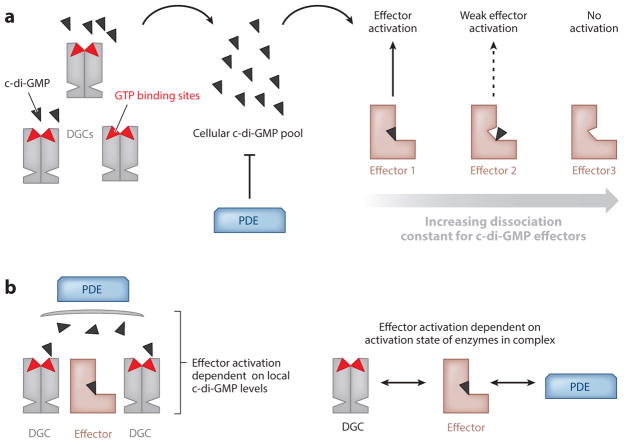Figure 1.
Modes of c-di-GMP signaling specificity. A variety of models have been proposed to explain the signaling specificity of a given DGC for a specific cellular process. (a) In a global model of signaling specificity, different DGCs produce varying amounts of c-di-GMP that contribute to a global pool, and PDEs can reduce the amount of the global pool. Effectors with the lowest dissociation constant are activated first. As the global pool of c-di-GMP increases, effectors with higher dissociation constants are activated. (b) Local models of c-di-GMP signaling can operate on several different principles. DGCs that are in proximity of—but not necessarily interacting with—effectors can create a local pool of c-di-GMP that may activate target proteins, whereas PDEs may be responsible for keeping the local c-di-GMP pool from affecting other effectors (left). Alternatively, direct interaction between DGCs, effectors, and PDEs can result in functional complexes. The state of the effector depends on the activation state of the DGC or PDE enzymes. Additionally, the DGC catalytic rate may be affected by physical interaction with its partners (right).

